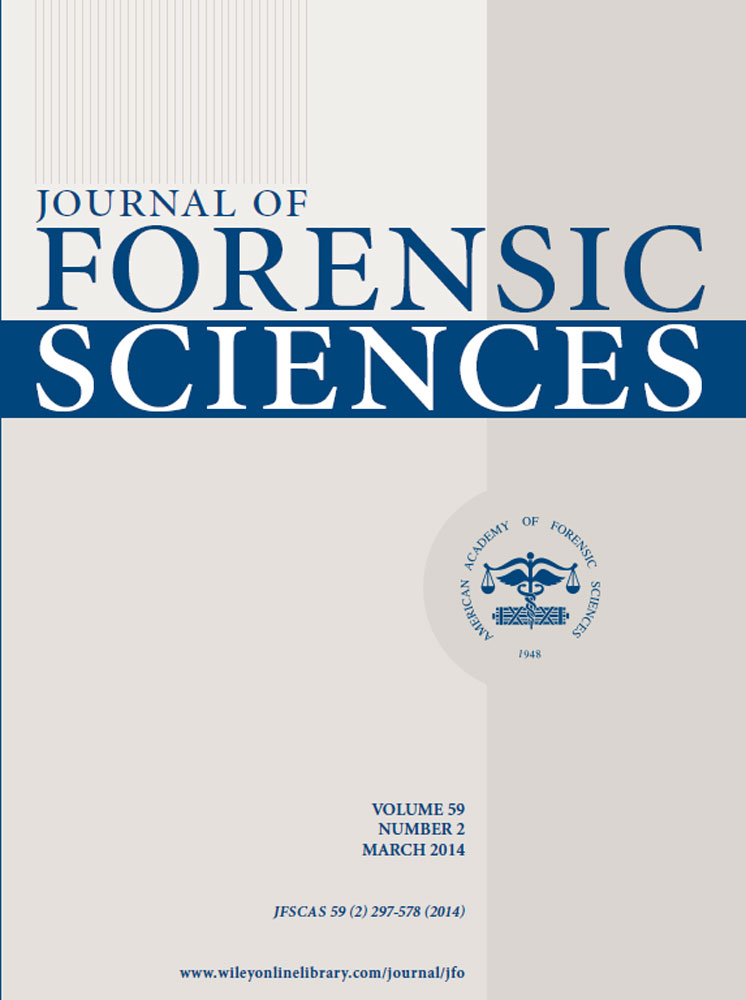Use of Postmortem Temperature Decay Response Surface Plots of Heat Transport in the Human Eye to Predict Time of Death
Abstract
A finite element heat transfer model of the human eye was previously constructed and applied to experimental postmortem temperature decay curves collected in eyeballs of ten human bodies. The model was applied in the early postmortem period of 0–24 h under conditions of natural convection–radiation. Based upon this previous model, response surfaces for postmortem temperature decay were constructed based upon variable ranges of the natural convective–radiation heat transfer coefficient from 7–13 W/m2 K, ambient temperatures of 10–33°C, and times of 0–24 h. Mathematical equations to describe these response surfaces have been developed. This response surface method is demonstrated for use by coroners/medical personnel to estimate time of death from recorded field temperature data collected over a 30-min period. Sensitivity of the model to small changes in the key variable of ambient temperature is explored. The response surface model is applied to two cases of previously collected experimental eyeball temperature data. This response surface model method is only valid for constant surrounding temperatures, conditions of natural convection, no radiation effects, and postmortem times of 0–24 h.




